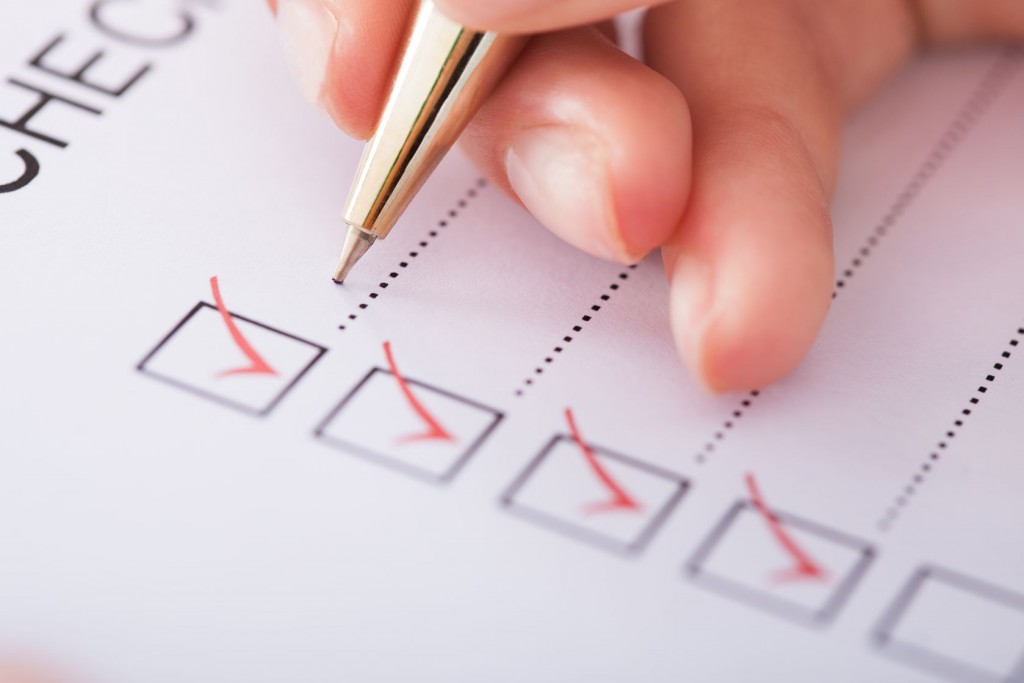Most of us automatically make a list whenever we begin a project. It might be a simple grocery list, a plan for a child’s birthday party, a packing list for an upcoming vacation or business trip, or your to-do list for today. We naturally know the value of getting endless lists out of our heads onto paper or an app.
But there is an even greater potential value than this one-off simple list-making process. It’s taking it a step further to create checklists and workflows for anything that is recurring.
I’ve done this for many years now. I first created reminder lists for things I needed or wanted to do regularly on a daily, weekly, monthly, quarterly, and annual basis. I now create checklists and workflows for just about everything.
- Daily routines such as my morning routine, prep for the next day before going to bed, daily planning the beginning of my work day, etc.
-
Recurring maintenance tasks such as how to winterize the lawn mower, run basic diagnostics and repairs on computers, correctly jump-start the car battery. Anything that you should do regularly but not frequently enough to confidently remember the next time.
-
Events or other recurring projects. Most of my career has included creating recurring events like church worship services, holiday events, annual conferences, summer camps, etc. These can be very complex and I don’t want to recreate the wheel every time. If I think there may be a chance the event will happen again, I document everything the first time and create checklists to make it easily repeatable.
Benefits Of A Checklist
-
It helps form habits. Let’s say you want to improve your health through consistent physical exercise. Your plan will probably include a number of things: warm up, stretching, cardio, weight training, cool down, etc. When you first start out, it’s a sharp learning curve. Having a checklist makes your good intentions actionable and easily repeatable.
-
It frees up your brain to create. Nothing creates more brain clutter than trying to remember endless lists. Doing so means living with the sense of impending doom, fearing you’re forgetting something. Use your brain to create, improve, problem-solve. Getting lists out of your head to a medium where easily accessed when needed frees up your brain and reduces anxiety.
-
It provides consistency in performance. No matter how accustomed you think you’ve become to a routine, we are all capable of forgetting an important step. Sometimes it’s not a big deal; other times it can be disastrous. Even the most seasoned, professional pilots use a checklist before takeoff—you should be thankful!
-
It allows for ongoing improvement. Once you’ve documented a process, it’s easy to edit when you want to make better.
-
It makes it easier to delegate to others. If you decide to hand off a routine or process to another family or team member, this makes the training easy. It also insures consistency in performance when several may share the responsibility.
Don’t’ see this as a chore or make it super-complex. As you form a new habit, do a recurring task, or plan for an event you’re bound to repeat in the future, document your steps along the way. Create a simple document with your word processor. I currently use Evernote. You could use any number of apps. Just keep it easy for you to create, update, and access when you need it.
Just take a step and create as you go. You’ll find that you’re less anxious, more consistent and effective, and spending less time thinking through a process over and over again. More time, more accomplished, less stress—who doesn’t like the thought of that?!
Question: What process or app do you use to document your checklists and workflows? Share your answer in the comments below.
